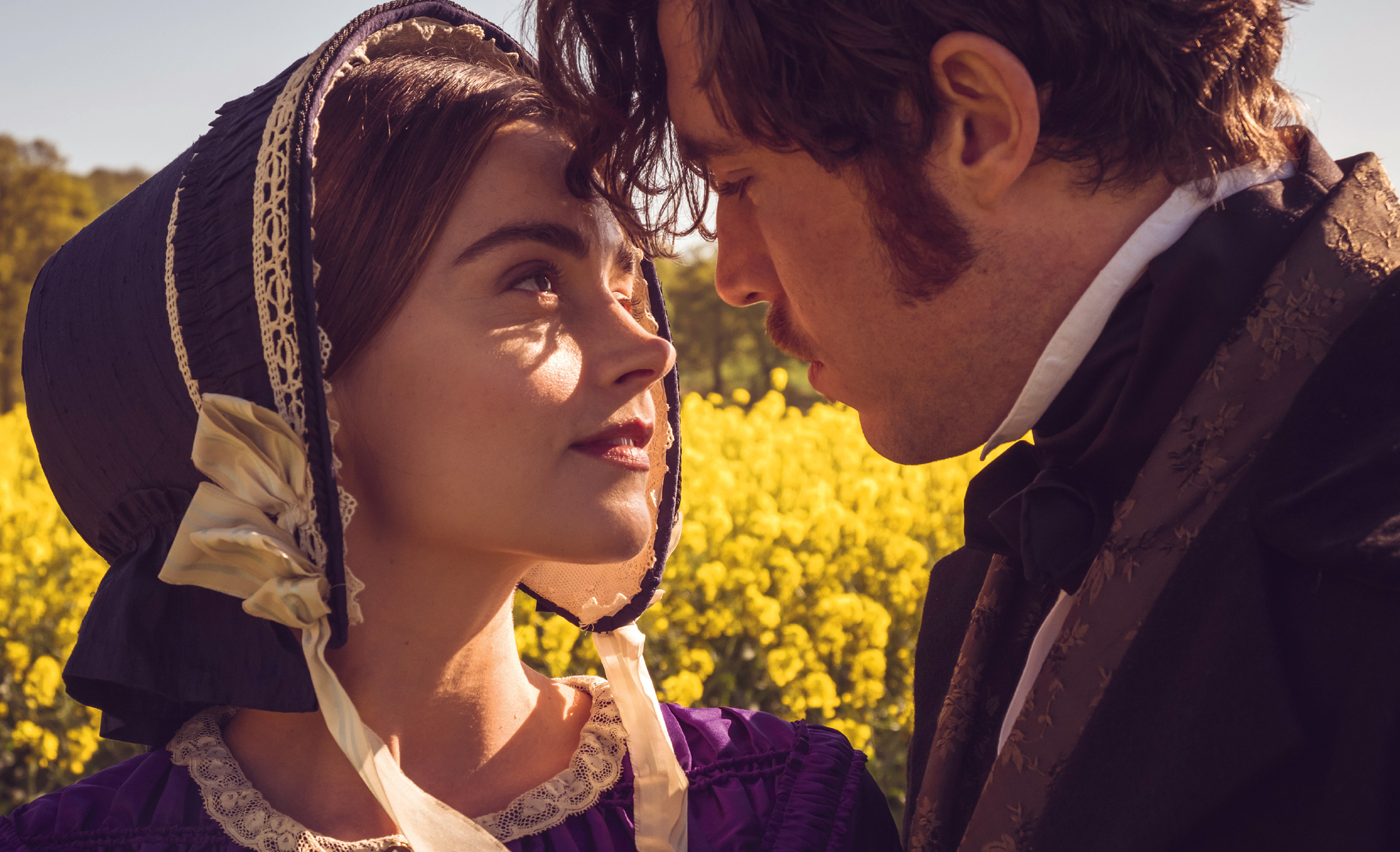

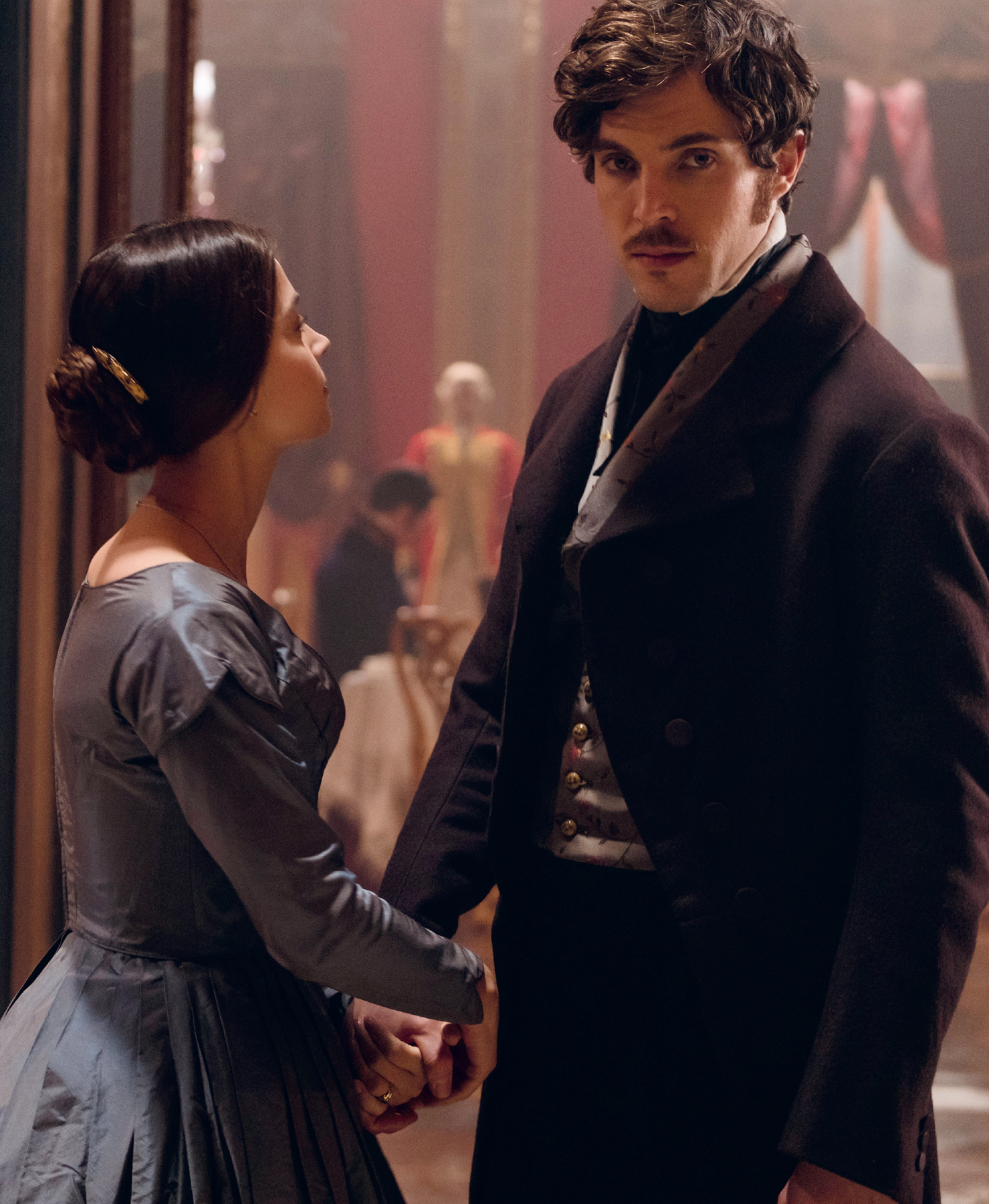
‘Victoria was very lucky. In Albert she found someone who loved her for herself … he found her physically attractive.’
DAISY GOODWIN, SCREENWRITER OF VICTORIA
WHEN VICTORIA PROPOSED to Albert in October 1839, he gave the young Queen Britain’s first engagement ring – the start of a succession of love tokens over the years and an act that has had a lasting impact on expectations of romance for every couple. She was smitten. When Victoria announced to her court her intention to marry Albert, she admitted that she was nervous – terrified, even. She wore a gold bracelet inlaid with a miniature portrait of her future husband to give her strength and later said it made her feel that he was with her when she wore it. Victoria was the first royal bride to wear a white wedding dress, thereby founding another tradition as well as a multi-million-pound industry. Victoria and Albert were famously devoted to each other. Neither of them had seen a genuinely happy domestic situation in practice – Victoria had been brought up under the stringent Kensington System, while Albert had grown up at Rosenau with an absent mother and neglectful father. While there is less written evidence of Albert’s love of his wife, he spent huge amounts of time with her and was not shy of making a romantic gesture. When Victoria gave him a flower as they were dancing at a ball during their courtship, he found he had nowhere to put it, so he took a knife, cut a slit in his uniform over his heart and slipped the bloom in there.
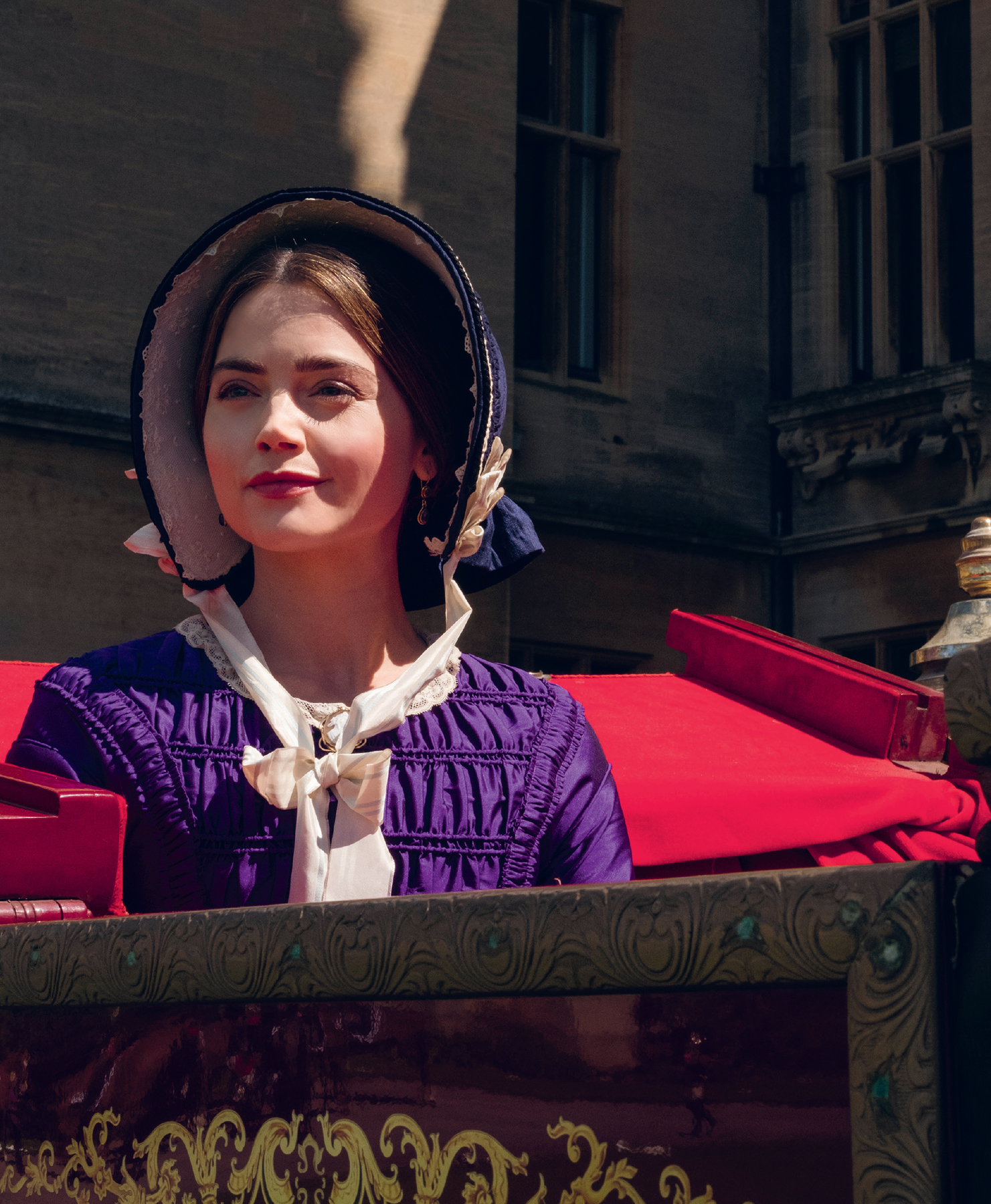
VICTORIA DID NOT ‘lie back and think of England’. The Queen’s diary after her wedding reveals a strong interest in the physical side of their relationship. She noted eagerly on the day before their marriage that this would be ‘the last time I slept alone’. It’s interesting that even on such an important and private day, Victoria still made time to write in her journal, where she records that a passionate relationship ensued between herself and her husband, and confided that the wedding night was ‘bliss beyond belief’. It’s perplexing that Victoria’s reign is commonly thought of as prudish when the Queen herself took such pleasure in sex.
During the first series of Victoria we saw the newly married Queen jumping up and down in the middle of the night to try and avoid pregnancy. The truth is there was no avoiding the duties of childbearing for an aristocratic British woman of her time. Contraceptives were available throughout Victoria’s reign in the form of makeshift condoms, but no respectable woman would use them and most weren’t even aware of the possibility. Also, Victorians thought women, like dogs, were most fertile during menstruation – the exact opposite of the truth. Bearing children within marriage was seen as a woman’s duty, and no one had more of a duty in that regard than the Queen herself. Ultimately, Victoria succumbed to the pleasures of the marital bed and enjoyed herself, despite the fact that quite early on in her marriage she realised she hated childbirth and was not interested in babies. The ‘fun’ element was the most important thing to her.

BARONESS LEHZEN:
Is it possible, Majesty, that you are to be blessed again?
VICTORIA:
Don’t be absurd, Lehzen. I’ve just had a baby.

‘His beauty, his sweetness and gentleness – really how can I ever be thankful enough to have such a Husband!’
VICTORIA’S JOURNAL THE DAY AFTER HER WEDDING NIGHT, 11 FEBRUARY 1840
THE VICTORIAN ERA has a reputation for being strait-laced, a time when formal middle-class life conformed to respectability in all things, but scratch the surface and there was a racy undertone – almost a secret world. In Georgian times, London had been awash with private clubs that could accommodate a variety of sexual interests. By Victoria’s reign these clubs were on the wane, but all the major cities had red-light districts where it was easy to find sex for sale. Out-of-towners could consult guidebooks like Roger Funnyman’s The Swell’s Night Guide through the Metropolis to find what they were looking for. Such volumes contained intimate details about what was on offer in different establishments. Some common practices were thought extraordinarily racy at the time – oral sex, for example, was considered one of the filthiest activities and was sometimes referred to as a ‘foreign practice’.
The spectre of the prostitute haunted middle-class homes, not only before marriage but also during it, partly because prostitutes were so difficult to spot. While there were a few places in London where women stood on the street to sell themselves, far more prevalent was a group of respectable-looking women, living together and ‘hiring out’. This was called ‘sly prostitution’ and there are no accurate records of how many women were engaged in the practice. Doctors of the day were extremely worried by the ‘problem’ prostitution presented, in particular the rise of venereal disease among the male population, who often then transmitted diseases to their wives. To combat the situation, the Contagious Diseases Act of 1860 allowed the forced medical examination of any woman who was suspected of being a sex worker. If infected, the woman could be placed in a specialist ‘lock hospital’ until she was cured. A reform movement led by campaigner Josephine Butler vigorously called for a repeal of the Act, arguing that it was male clients who were responsible for the problem – why not lock them up?
Society, however, did not agree and many charities were instituted to ‘reform’ prostitutes. For example, Charles Dickens collaborated with the heiress and philanthropist Angela Burdett-Coutts to set up a ‘Magdalen House’ to train prostitutes in other trades to prepare them for a new life in Australia. Despite these efforts, prostitution continued to flourish. Single mothers were looked down upon and social censure was so grave that most handed over their babies to the Foundling Hospital in London or, horrifyingly, killed their newborn children in desperation. For many, prostitution was a way out of poverty and one of the few ways they could make enough money to build a better life.
For men looking for less direct titillation than prostitutes provided, burlesque shows were a speciality. First seen in New York in the very early years of Victoria’s reign, burlesque soon made it to Britain when London’s Gaiety Theatre and the Royal Strand Theatre ran pastiche parodies of popular songs, operas and other music performed by saucy, scantily-clad young ladies. The up-and-coming medium of photography was also making pornography easier to distribute, and today there are huge archives of this material – a testament to its popularity.

ALBERT:
Where are you going?
VICTORIA:
To the nursery, Albert. Isn’t that where you think I belong?

THE YOUNG QUEEN could be jealous, and her suspicions were aroused if Albert so much as talked to another woman. She suspected several young ladies at court of flirting with her husband, including the stately Elizabeth, Marchioness of Douro, and Maids of Honour Harriet Pitt and Mary Spring Rice, the latter of whom liked to chat to Prince Albert to practise her German. Olivia, the pretty daughter of the 2nd Marquess of Headfort, was packed off home when Victoria noticed the way that the young Irishwoman spoke to Albert. Later, Olivia became Lady Fitzpatrick and it was said of her that ‘she would start a flirtation with St Paul under the eyes of the Deity’. Albert, however, never responded to such interest. The idea of a relationship outside of marriage was unthinkable – his childhood made him terrified of infidelity.
The young couple treasured their privacy. In a palace with almost a thousand staff, it’s easy to see why – royal lives were conducted in public and Victoria had been heavily supervised throughout her childhood. She had enjoyed almost no personal space, and Albert was now protective of that space, objecting to intrusions into the royal bedchamber by Baroness Lehzen and other staff. Clearly the royal couple’s physical relationship was a priority for them both.
‘… I expect [Albert] back at about eleven tonight. He went at half past eleven this morning. It is the first time that we have ever been separated for so long since our marriage, and I am quite melancholy about it.’
~LETTER FROM VICTORIA TO LEOPOLD, THE KING OF THE BELGIANS, 8 AUGUST 1841
This passion was sparked in other areas of their domestic life, too, when the couple fought. Arguments might be about domestic arrangements – certainly when Albert objected to Baroness Lehzen’s influence in the nursery, he and Victoria had a protracted fight about it (see here–here) – but in fact they argued over a wide range of subjects and situations. Victoria felt left out of Albert’s scientific interests. While she had benefited from a wide-ranging classical education she could not always join him in mathematical or scientific debate, and she found this frustrating. More than anything, however, in these early years they argued about Albert’s role.
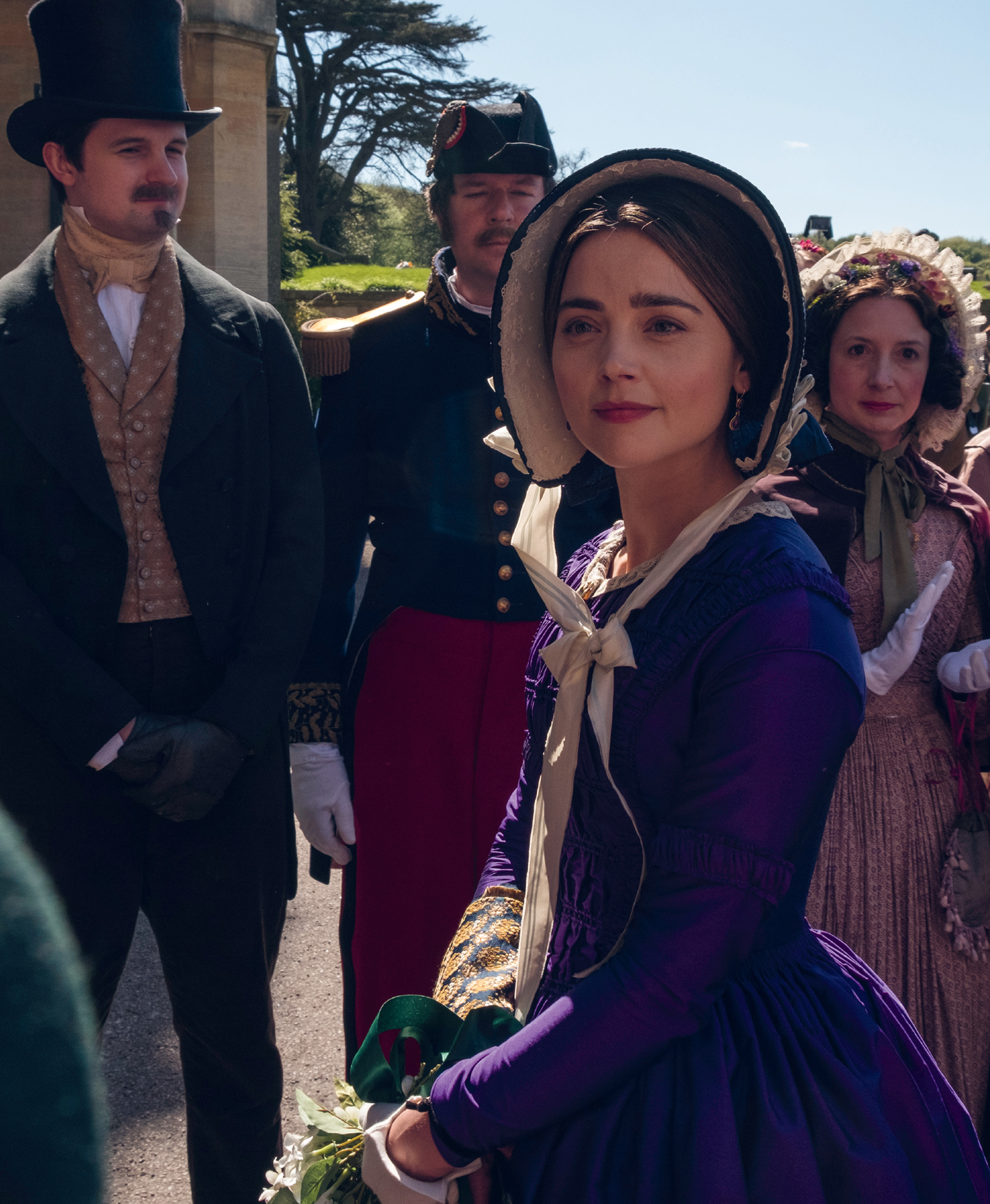

‘The sky will not always be blue and unclouded. But life has its thorns …’
~LETTER FROM ALBERT TO HIS STEPMOTHER AND COUSIN, DUCHESS MARIE OF WÜRTTENBERG, 5 NOVEMBER 1839
Albert had been slighted by Parliament from the beginning of the marriage, when the House of Commons chose to accord him an allowance of £30,000 as opposed to the usual amount for a royal spouse of £50,000. Parliament also overruled Victoria’s wish that Albert be accorded the title of King as opposed to Prince Consort. Albert accepted these constrictions and later, once he had proved himself, Parliament upped his allowance. In an atmosphere where his skills were not immediately valued he faced an uphill battle in finding something worthwhile to do. He wanted to help Victoria rule (though Britain was by this time a constitutional monarchy and even the Queen had limited power), but Victoria was highly sensitive to anyone (Albert included) encroaching on her duties. She had refused to delete the promise ‘to obey’ her husband from her wedding vows, wanting to conform to what was a normal marriage for the day. In practice though, she found herself torn between enjoying domestic bliss and feeling that her authority was being undermined by pregnancy after pregnancy. While the Queen was engaged in the business of childbirth and its aftermath, Albert took over her duties. Victoria resented this not only because she was the Queen, but also because she wanted him to be at her bedside, spending time with her. While they never fought in full public view, their arguments were an open secret at the palace and servants, staff and courtiers could not help but witness their heated exchanges.

VICTORIA:
It may be your regiment, Albert, but it is my army.

‘I think one of the reasons Melbourne and Victoria immediately got on so well was that I don’t think she’d met anyone before that would take her at her word. No one had listened to her and given her credence in that way. Melbourne was very successful but he was also a very kind man and well liked.’
‘He was everything to her for a while.’
 RUFUS SEWELL (MELBOURNE)
RUFUS SEWELL (MELBOURNE) 
WHEN VICTORIA’S BELOVED Lord M resigned as prime minister in 1841 it didn’t by any means mark the end of their relationship. Indeed, correspondence between them continued on a daily basis, which many considered inappropriate. For the Queen, however, the friendship was vital. She was devastated when Melbourne resigned and burst into tears on the terrace at Windsor Castle the evening he left. Melbourne tried to be cheerful. The four years he’d had with Victoria were, he declared, the happiest and proudest of his life. But Victoria never really let her favourite prime minister go, and tongues continued to wag in the palace and beyond.
‘My poor good Ld Melbourne, … was looking well in health, but alas! has such a sadly vacant look in his eyes, which it grieves me so to see.’
~VICTORIA’S JOURNAL, 1 DECEMBER 1843
Inevitably perhaps, Victoria’s reliance on Melbourne’s advice resulted in gossip. She was publicly referred to as ‘Mrs Melbourne’ on more than one occasion – crowds shouted the name at her as she rode past in her coach, and when she arrived at Ascot with Melbourne in tow it was hurled from the stands. Magazines circulated showing a cartoon of Melbourne as landlord of the ‘Windsor Arms’ and Victoria peering down from an upstairs bedroom. Nonetheless, the Queen continued to seek political advice from her beloved Lord M as well as sharing family news and gossip with him. Over time, their letters contained less and less politics.
In the years after he left office, Melbourne’s health declined. He was ageing and overweight, and though he continued to attend balls at the palace, the correspondence between him and Victoria gradually became more infrequent and had all but ceased by 1845. He died of a stroke at Brocket Hall in 1848 and, as his children had predeceased him, his title passed to his brother, Frederick.

ALBERT:
How can you believe that writing to Melbourne is anything but foolish? The Whigs are out of office, to write to him is unconstitutional.

VICTORIA AND ALBERT both cultivated their own camps. Victoria continued to write to Lord Melbourne for political advice, which Lord M handled with delicacy, while Albert was closer to the new Tory prime minister, Sir Robert Peel, which helped Peel in some of his reforms. Ever a perfectionist, when he undertook state business on behalf of his wife Albert agonised over each situation, trying to find the perfect solution. He laboured over complex filing systems for the royal papers, as well as editing and transcribing letters obsessively – all of which points to his determination to do well. Early in their marriage, issues like the British defeat in Afghanistan and the British victory in China provided plenty of fodder for debate between the couple. They also had fun and joked about making ‘Pussy’, their eldest daughter, Vicky, Princess of Hong Kong when it was ceded to Great Britain in 1842.
‘ I thank God you have such an excellent husband, so well calculated to make you happy and to assist you in your arduous duties by his advice, as well as his help in sharing your troubles. I pray that your domestic happiness may last …’
~LETTER FROM VICTORIA’S AUNT, QUEEN ADELAIDE, TO VICTORIA, VALENTINE’S DAY, 1843
However, the arguments were ongoing, and Victoria – a passionate woman in all things – was vocal in her anger, slamming doors and shouting. Albert was a more repressed personality and when his wife lost her temper he would usually retreat. There was a medical fear voiced at the time that if Victoria became too distressed she might succumb to the madness of George III (her grandfather). If the Queen lost her mind, the very institution of the monarchy would be threatened. While this concern was not valid in the light of modern medical understanding, there is no question that Albert had been briefed about it and that it was part of his decision to stand down when arguments with his wife became heated.
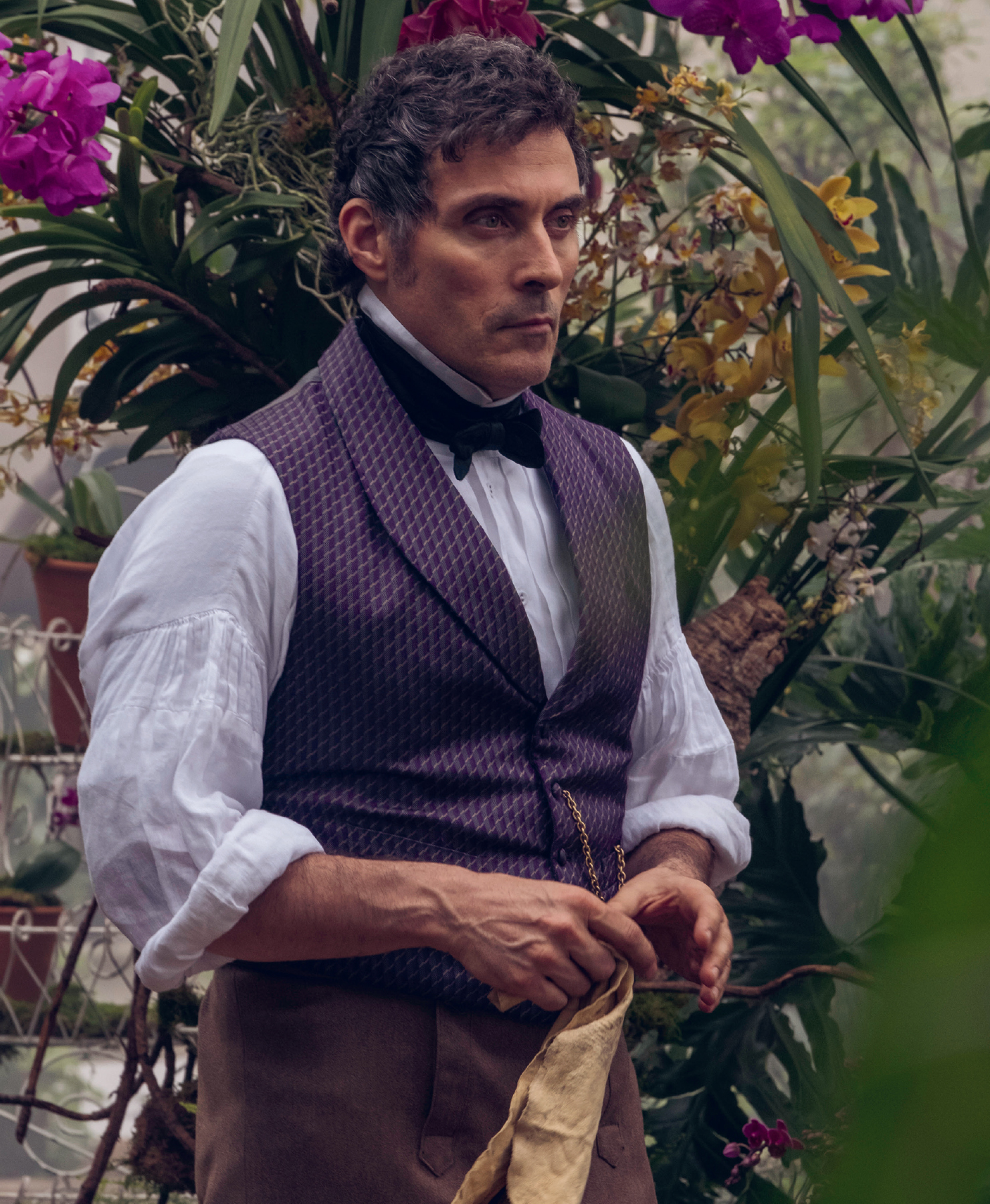
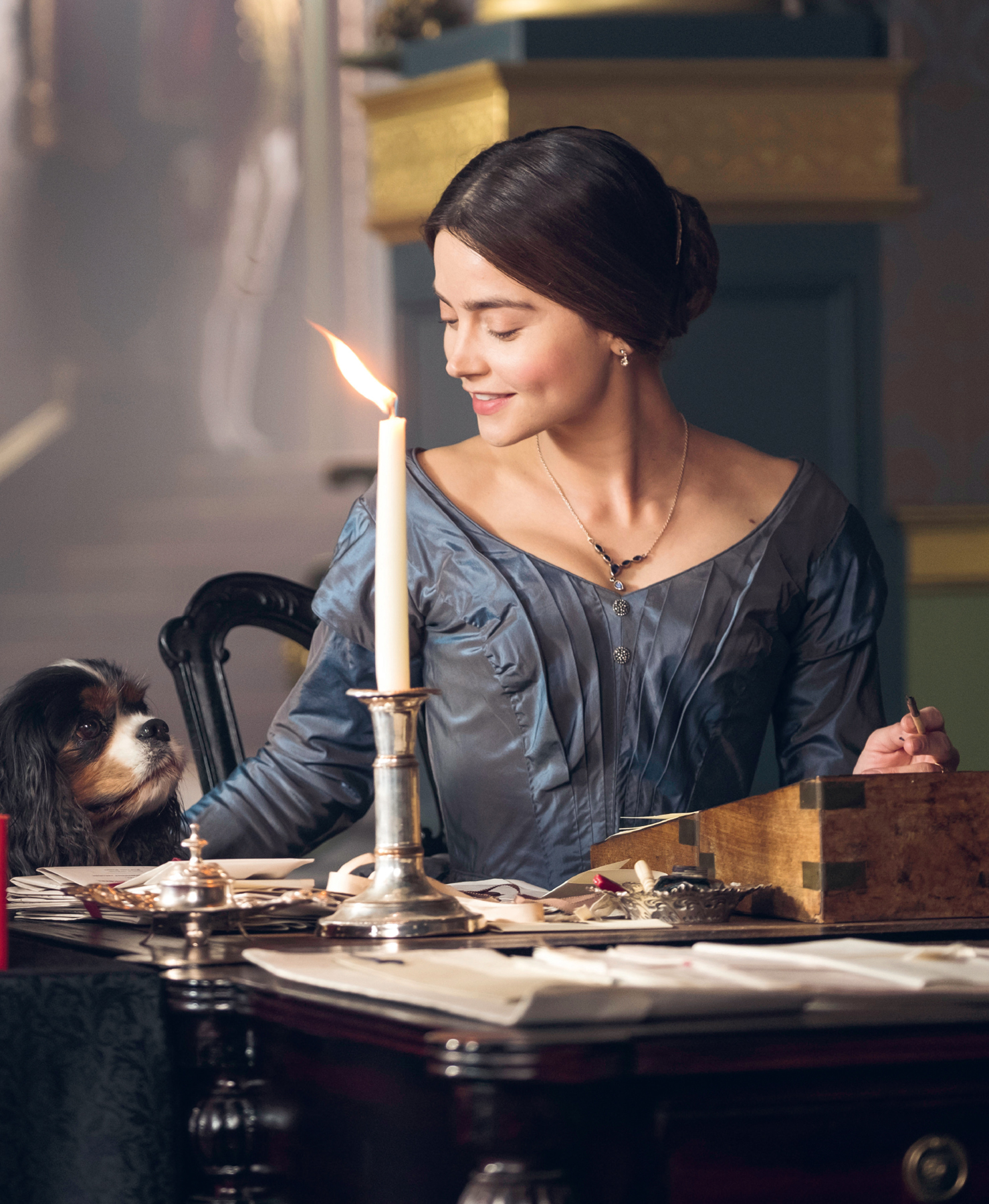
USUALLY THE QUEEN would eventually relent. She adored her husband, after all, and ultimately valued his input and was desperate for him to be embraced by the public. She looked forward to their daily walk in the grounds of the palace, where they could be alone. Over time, she allowed him not only to work with her on the Parliamentary boxes delivered to the palace, but also to attend ministerial meetings. At Osborne House, Albert had a double door built into the room where ministerial meetings were held so that the couple could arrive simultaneously – which was done with the Queen’s consent. Initially when Victoria expressed her views, she did so in the singular ‘I’, but quickly she moved to what we now know as ‘the royal we’, by which she meant herself and Albert. Albert was ‘king’ at home in the royal palace, if not in the wider country.

MELBOURNE:
I did not want you to be overshadowed. Yes, the Prince is your husband, but you are The Queen.

‘I wish you could see us here and see in us a couple united in love and unanimity. Now Victoria is also ready to give up something for my sake, I everything for her sake … Do not think I lead a submissive life. On the contrary, here, where the lawful position of the man is so, I have formed a prize life for myself.’
UNDATED LETTER FROM ALBERT TO HIS BROTHER, ERNST, BEFORE THE BIRTH OF PRINCESS VICTORIA

VICTORIA:
Actually, Uncle Leopold, what my country needs right now is a queen, not a brood mare.

THIS DIDN’T MAKE the arguments any easier. Albert was of a serious bent and in dealing with Victoria’s temper he often sounded like a schoolteacher. In one letter, he praised her ‘unbroken success of self-control’ when she had a period of not losing her temper. Often he would simply walk away and then afterwards write to Victoria, begging her to talk rationally and see his point of view. On one occasion he locked his door and wouldn’t let Victoria in until she asked him ‘as his wife’, not ‘as the Queen’. For her part, Victoria wrote long letters of apology for her bad behaviour and begged Albert’s forgiveness. They always made up in the end.
It should be said that the situation in which the royal couple found themselves was unique in its day. For the women under Victoria’s rule, their husband’s word was law, quite literally. On reaching adulthood, women passed from the care of a father into the care of a husband, and it was often only in widowhood that they gained any measure of self-determination. Even working women had no right to the money they earned. Until the Married Women’s Property Act of 1870, everything a married woman earned legally belonged to her husband. It wasn’t until the Act of 1882 that she could retain her own property once she was married. Victoria’s royal position accorded her the tremendous privilege of control over her professional life and her own purse strings. It’s little wonder she stood up for that but also, given the social norms of the day, understandable that she ultimately often deferred to Albert.
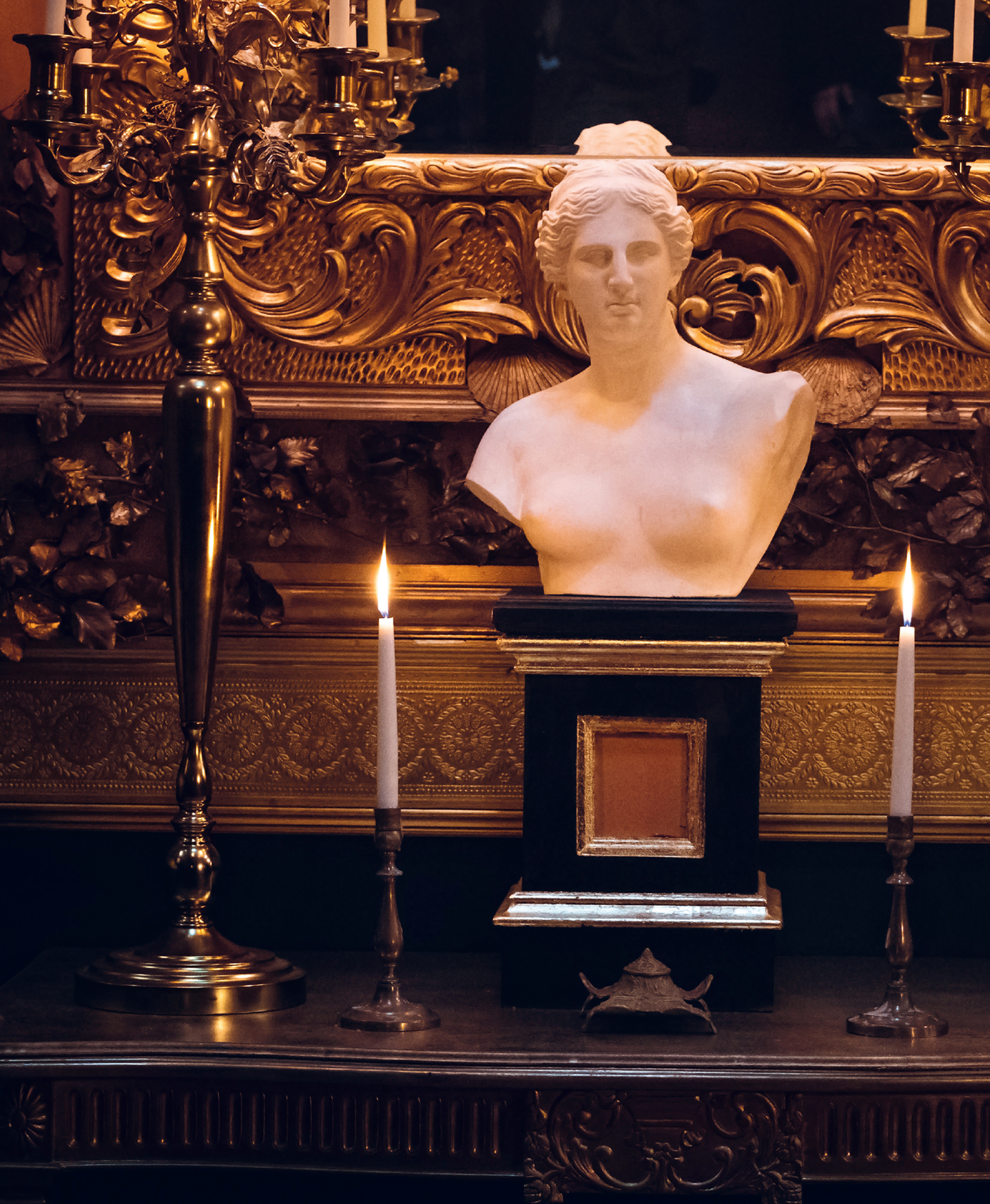
DURING THE VICTORIAN period, the roles of men and women became more sharply defined than at any other time in history. In earlier centuries it had been usual for ordinary middle-class women to work alongside their husbands and brothers in the family business, but as the nineteenth century progressed men increasingly commuted to their place of work – the factory, shop or office – and their wives, daughters and sisters were left at home. By contrast, the stories of working-class women highlight the discrepancy between the country’s wealth and its appalling social conditions. Women were beginning to earn wages in mills and factories for the first time and economic independence meant political momentum was gained for women’s rights.
Mrs Beeton’s Book of Household Management, first published in 1861.
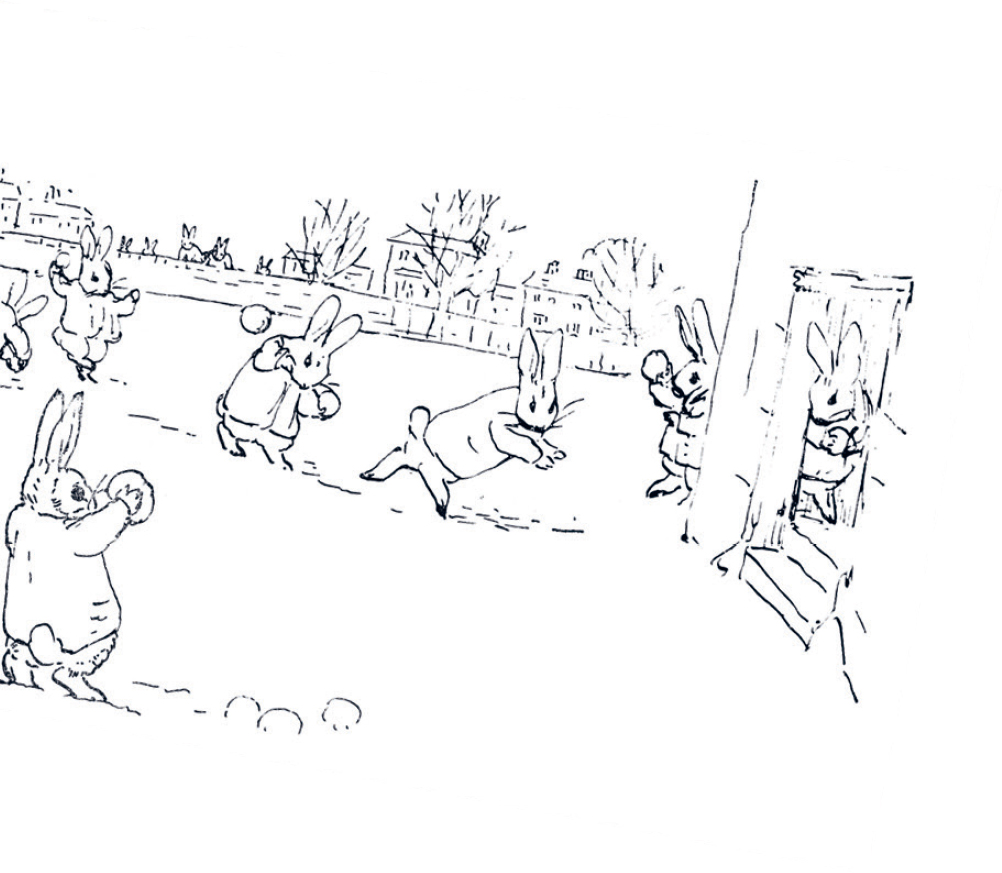
Prints by female writer and illustrator Beatrix Potter, which went on sale in 1893.
1837  Queen Victoria comes to the throne
Queen Victoria comes to the throne
1840  Elizabeth Fry opens a training school for nurses
Elizabeth Fry opens a training school for nurses
1840  Romantic ballet becomes fashionable. Victoria adores Marie Taglioni
Romantic ballet becomes fashionable. Victoria adores Marie Taglioni
1842  Ada Lovelace writes the first computer program
Ada Lovelace writes the first computer program
1844  The Factory Act cuts women’s hours to no more than twelve per day
The Factory Act cuts women’s hours to no more than twelve per day
1847  The Brontë sisters are first published
The Brontë sisters are first published
1848  Harriet Martineau publishes her book Household Education , about the rights of women
Harriet Martineau publishes her book Household Education , about the rights of women
1853  Women gain legal protection from domestic violence
Women gain legal protection from domestic violence
1853  Queen Victoria uses chloroform for pain relief during the birth of Leopold
Queen Victoria uses chloroform for pain relief during the birth of Leopold
1853  Elizabeth Gaskell publishes Cranford
Elizabeth Gaskell publishes Cranford
1854  Isabella Bird writes books about her solo trips all over the world
Isabella Bird writes books about her solo trips all over the world
1855  Mary Seacole sets up field hospitals in the Crimean War
Mary Seacole sets up field hospitals in the Crimean War
1857  The Matrimonial Causes Act grants women limited access to divorce
The Matrimonial Causes Act grants women limited access to divorce
1861  Mrs Beeton’s Book of Household Management is first published
Mrs Beeton’s Book of Household Management is first published
1865  Marie Bancroft manages the Prince of Wales’s Theatre
Marie Bancroft manages the Prince of Wales’s Theatre
1866  John Stuart Mill campaigns with the Women’s Suffrage Committee to get women the vote
John Stuart Mill campaigns with the Women’s Suffrage Committee to get women the vote
1869  Edinburgh University admits the first women to medical school
Edinburgh University admits the first women to medical school
1869  Single women ratepayers are allowed to vote in local elections
Single women ratepayers are allowed to vote in local elections
1870  The Married Women’s Property Act decrees that women can keep the money they earn after marriage
The Married Women’s Property Act decrees that women can keep the money they earn after marriage
1870  The first condom factory producing rubber condoms opens in Dalston
The first condom factory producing rubber condoms opens in Dalston
1874  Sophia Jex-Blake and Elizabeth Garrett Anderson found the Women’s School for Medicine
Sophia Jex-Blake and Elizabeth Garrett Anderson found the Women’s School for Medicine
1878  The Matrimonial Causes Act decrees that men must financially support their wives and children
The Matrimonial Causes Act decrees that men must financially support their wives and children
1879  Oxford names one of its first women’s colleges Somerville College after scientist Mary Somerville
Oxford names one of its first women’s colleges Somerville College after scientist Mary Somerville
1881  The Rational Dress Society publishes its gazette arguing for comfortable clothes for women
The Rational Dress Society publishes its gazette arguing for comfortable clothes for women
1882  The Married Women’s Property Act allows women to keep their money and property after marriage
The Married Women’s Property Act allows women to keep their money and property after marriage
1889  Hints to Lady Travellers by Lillias Campbell Davidson is published
Hints to Lady Travellers by Lillias Campbell Davidson is published
1890  Alice Bodington publishes her book on Darwin
Alice Bodington publishes her book on Darwin
1893  Prints of Benjamin Bunny by Beatrix Potter first go on sale
Prints of Benjamin Bunny by Beatrix Potter first go on sale
1895  Lilian Lindsay qualifies as the first female dentist
Lilian Lindsay qualifies as the first female dentist

DUCHESS OF KENT:
I thought that motherhood would make her less difficult, but it has only made her worse. She is rude to everyone, including Albert.

DESPITE THEIR STORMY relationship, Victoria and Albert were clearly extremely happy, and while arguments blew up with regularity, they were usually settled quickly. The royal couple were generous with each other and often gave each other gifts – sometimes as part of the making-up process, sometimes to mark an occasion or simply because they wanted to express their love. These gifts form a kind of journal of their life together. Typically, they commissioned items, making them extremely personal. For example, Victoria ordered a silver model of Albert’s greyhound, Eos, in 1840, and also commissioned the favoured royal painter Edwin Landseer to paint Eos and gave the resulting portrait to Albert for Christmas the following year. In 1843 she posed for a ‘boudoir’ painting by fashionable artist Franz Xaver Winterhalter, choosing a not-very-royal and rather sexy pose, with her hair trailing over her shoulder. She gave this painting to Albert as a present on his twenty-fourth birthday and he kept it in his private rooms at Windsor Castle. After Albert’s death Victoria wrote that it was ‘my darling Albert’s favourite picture’. The portrait was considered so racy that it was never put on public display during the Queen’s lifetime. In it Victoria is wearing a locket that contained a lock of Albert’s hair.
Over the years, despite Victoria’s reputation for being prudish, the couple collected several extraordinarily erotic paintings, including a number of nudes by William Edward Frost, many of which were hung in the public rooms of their various homes. Victoria also ordered a statue of Lady Godiva by French sculptor Pierre-Emile Jeannest, whose work Albert admired, and gave it to her husband as a birthday gift in 1857. When the Queen commissioned Scottish artist William Dyce to paint a fresco entitled Neptune Resigning to Britannia the Empire of the Sea – a scene of writhing male and female nudes – Dyce said that Prince Albert was shocked. More privately, though, in Albert’s bathroom at Osborne House there is an astonishing mural of Hercules in bondage to Queen Omphale.
MANY OF THE items in the book and the series are still in the Royal Collection. The Collection is a unique record of the personal tastes of kings and queens over the past 500 years and includes the majority of the contents of some thirteen royal residences and former residences across the UK, most of which are regularly open to the public. These include Windsor Castle, Buckingham Palace, Kensington Palace, Osborne House and the Royal Pavilion, Brighton.
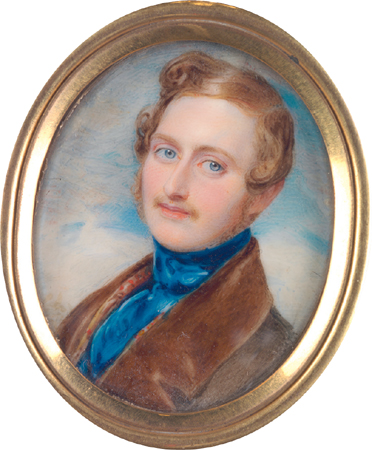
A miniature of Albert produced In 1840.
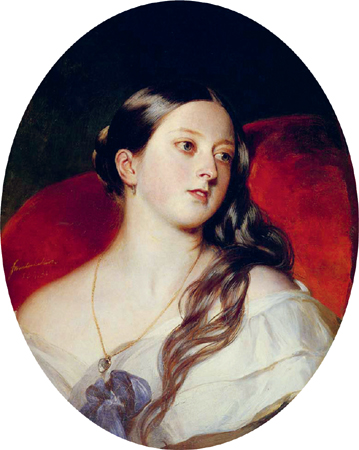
Painted by Franz Xaver Winterhalter, Albert hung this 24th birthday present from Victoria in his private rooms.
‘Even in infancy a marked difference was observable … their separate paths were definitely marked out, yet … seems to have afforded a closer bond of union between them.Mr Florschutz, Albert and Ernst’s tutor on his charges as children.’
MEMORANDUM, 23 NOVEMBER 1823
THE SECOND SERIES does not cover Albert’s brother’s marriage, which took place on 3 May 1842 when he married Princess Alexandrine of Baden. Ernst was a tricky figure for those closest to him. Like his father, and in contrast to Albert, he had been a notorious womaniser throughout his teens and twenties and had fully sampled the delights of both Paris and Berlin, at his father’s insistence. When he visited London in 1839 one of Victoria’s ladies-in-waiting observed that Ernst was ‘very thin and hollow-cheeked and pale, and no likeness to his brother’.
In fact, he was suffering from a venereal disease. Albert was furious and warned his brother not to seek a wife until his condition was cured. However, syphilis, from which Ernst suffered, is a complex disease. In its early stages the patient suffers from rashes and sores but as it progresses the symptoms become more serious, with high temperature, changes in vision, hair loss, and ultimately it affects the heart and central nervous system and can lead to tumours. In the Victorian era it was incurable. Ernst tried – he underwent mercury steam baths, the treatment of the day – but to little effect. Albert raged that Ernst’s continued promiscuity might render him unable to father children, but he did in fact have at least three illegitimate children and probably more. This was not unusual for aristocrats at the time. The Duke, Ernst and Albert’s father, had also fathered illegitimate issue – at least four children are on record, by three different women.

WHILE SUPERFICIALLY VICTORIAN society was relatively prudish, the lines between respectable women and those on the make were more blurred than many historians like to admit. Throughout Victoria’s rule there was a rainbow of relationship arrangements in existence. Without the ease of divorce, many couples in ‘second’ relationships could never be entirely open about what was going on. Some women were set up in houses by their married lovers and referred to as ‘kept’, and the moral duty of a man to provide for his ‘kept’ lady was generally recognised along the lines of a ‘common law marriage’. Another practice was that of keeping a ‘common’ woman, a scenario in which several men might contribute to a woman’s upkeep and all demand sexual favours from her.
In the upper classes many couples had affairs that were pursued privately at house parties – once a wife had provided an heir and a spare, she was often considered free to take a lover if she so wished. In practice, this was not openly acknowledged, but if a group were staying for a few days in a large, aristocratic house, it might be expected that, once everyone had gone to bed, couples would creep along the corridors to have illicit sex. High- or low-class, people were pragmatic about such arrangements, and as long as they were discreet, couples could do whatever they liked. This even happened in royal residences, though Victoria was probably not aware of it. When Albert took over the management of the royal houses, however, he changed the sleeping arrangements, making midnight assignations more difficult to achieve.
It’s worth noting that for most of Victoria’s reign homosexuality was only illegal if it was practised ‘in public’. You could get up to what you liked behind closed doors. Later in Victoria’s reign the law changed and in 1885 homosexuality was made illegal, even in private. The writer Oscar Wilde was in one of the first waves of men to be imprisoned when his affair with Lord Alfred Douglas was publicised in 1895. Lord Alfred was sent abroad for several months by his family to remove him from the scandal, while Wilde was detained at Reading Gaol.
This shows how much attitudes varied over the course of Victoria’s reign – the 1860s, for example, was a particularly laid-back decade. The 1890s were also famously liberal, and were nicknamed the ‘Naughty Nineties’ for good reason – unless you were gay. However, it’s easy to forget in looking at the underbelly of Victorian life how hearty and accepting it could be. The female distaste evidenced by one woman’s supposed advice to her newly married daughter to ‘lie back and think of England’ was not the norm, and many married women enjoyed fulfilling sex lives with their husbands – just as Victoria did.
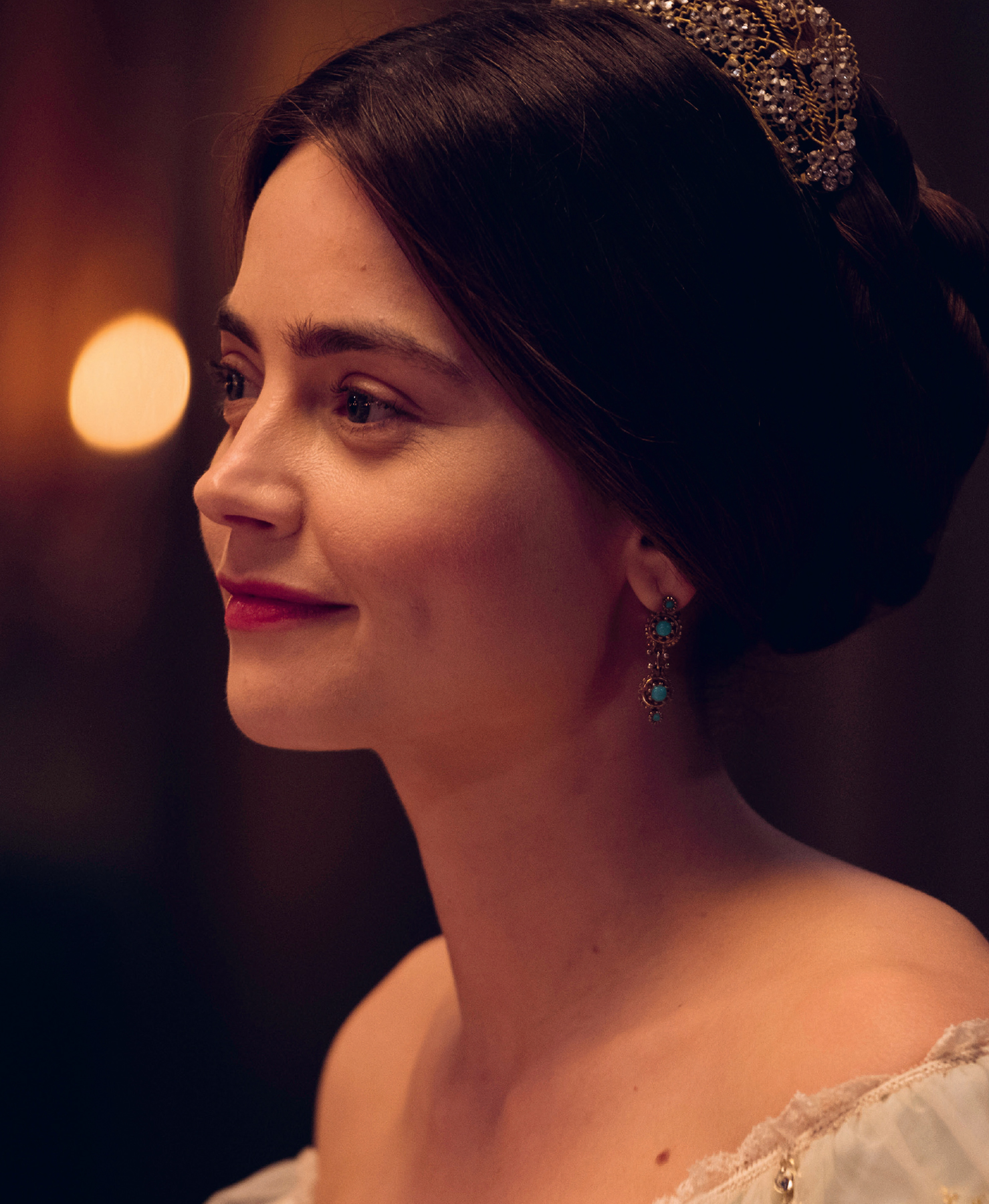
15 November 1839
‘Even in my dreams I never imagined that I should find so much love on earth.’
LETTER FROM ALBERT TO VICTORIA DURING THEIR ENGAGEMENT, 15 NOVEMBER 1839 (WRITTEN IN GERMAN)
ALBERT FAVOURED JEWELLERY when he chose gifts for Victoria. The day before their wedding in 1840 he gave her a sapphire and diamond brooch. Victoria said it was ‘really quite beautiful’ and wore it on her wedding dress alongside the gold and porcelain orange blossom sprig he had sent her on their engagement, with a piece of music he had written especially for her. Over the years, he continued to give Victoria pieces of jewellery to match the orange blossom set, the flower being considered an aphrodisiac and widely thought to be lucky. In 1845 Victoria received a second orange blossom brooch and a pair of matching earrings as a Christmas present. She wrote in her journal, ‘My beloved one gave me such a lovely unexpected present … with four little green enamel oranges meant to represent our children.’ Later, more oranges were added as the family grew. Albert exercised his artistic talents and sometimes even designed pieces especially for his wife, including a pair of pear-shaped pearl drop earrings hanging from a diamond stud that he gave to her in 1847, and a brooch made out of a portrait of the Princess Royal as a baby inset into angel wings studded with gemstones. Princess Victoria later explained that ‘Papa gave it to Mama … she always wore it on my birthday.’
Victoria certainly loved jewels, but she prized all gifts from her husband equally, regardless of their monetary value, and would dote upon items made from the milk teeth of the Princes and Princesses quite as much as those made from diamonds. More touching than any of the artefacts the royal couple left behind, however, are their letters to each other – tender, caring and, sometimes, even erotic.
‘My beloved one gave me such a lovely unexpected present – a wreath, going right around the head, made to match the brooch and earrings he gave me at Christmas.’
VICTORIA’S JOURNAL, CHRISTMAS 1845
WHEN VICTORIA CAME to the throne she inherited the magnificent royal collections of jewels, which, during her sixty-four-year reign, expanded exponentially with gifts from the burgeoning empire, including the famous 186-carat uncut Koh-i-Noor diamond from India – now part of the Crown Jewels – which she received in 1849. Albert was fascinated by the Koh-i-Noor and, along with the Duke of Wellington, took an active interest in how the stone was to be cut to the best effect. He consulted with the leading gemologists and lapidologists of his day. The Queen also purchased jewellery in her own right and received presents from Albert, who enjoyed designing gifts for his wife, including the four tiaras or diadems he presented her with during the course of their marriage.
One of the most significant of these was an emerald, diamond and gold tiara that Albert commissioned in 1845 from goldsmith Joseph Kitching. The tiara cost £1,150 – over half a million pounds in today’s money – and was designed by Albert in the Gothic Revival style. It features upright cabochon (meaning polished but not faceted) emeralds, probably sourced from Colombia. The cabochons are in the vesica piscis shape, which literally means ‘the bladder of a fish’, and are set on a base of scrolls with a triple layer of gemstones in the circlet, and one layer of baguette-cut emeralds with a layer of brilliant-cut diamonds on either side. It seems Albert simply gave his wife this gift without ceremony, rather than waiting for a special occasion – perhaps he was too excited to wait.
When Victoria posed for Franz Xaver Winterhalter’s portrait of the royal family in 1846 she wore the tiara and also sported earrings and three brooches to match. Later, she was painted again wearing the tiara, accessorising it this time with other jewels. It’s no surprise that it was one of her favourite pieces, not only because of its great value, but because Albert had had it made especially for her.
The emerald and diamond tiara remains in the private collection of one of Victoria’s descendants and was loaned to the Historic Royal Palaces in 2017.

Detail of a family portrait painted by Franz Xaver Winterhalter in 1846 depicting Victoria wearing the emerald and diamond tiara designed by Prince Albert.
THE SYMBOLISM OF flowers was a highly popular way to send a ‘secret’ message in Victorian times, especially a romantic one. Reporting on the marriage of Queen Victoria and Prince Albert on 10 February 1840, The Times newspaper noted, ‘Her Majesty wore no diamonds on her head, nothing but a simple wreath of orange blossom.’ The Queen’s modest floral adornment was an emblem of chastity and also widely believed to be an aphrodisiac. It spawned a fashion for orange blossom jewellery, like the brooch Albert had given Victoria before their wedding day, and over the years he added to his wife’s collection. Victoria also had a Minton pen tray decorated with pansies, which were said to symbolise loving thoughts. She would have been well aware of this symbolism.
Victoria’s favourite flower, however, is believed to be the violet – it’s certainly the one mentioned most often in her diary. She had two baskets adorned with violets when she was a child, and often picked both primroses and violets in the gardens at Osborne House and elsewhere. Violets meant ‘modesty’ in the language of flowers, hence the phrase ‘shrinking violet’. Primroses, on the other hand, meant ‘I can’t live without you!’
Victoria often wore real flowers in her hair, and wreath-making was a valued skill among her ladies.
The craze for secret messages in flower form started in 1825 when the botanist Henry Phillips wrote the first book in English about the meaning of different flowers. Quickly, Victorian lovers learned the code:
Begonia: Beware
White carnation: Purity, True love, Innocence
Pink carnation: I will never forget you
Red carnation: Admiration
Chrysanthemum and/or crocuses: Cheerfulness
Daffodil: Unrequited love
Fern: Magic, Fascination
Forget-me-not: Memories
Gardenia: Secret love
Geranium: Folly
Holly: Domestic happiness
Hyacinth: Games and sport
Iris: Friendship, Hope
Ivy: Marriage, Fidelity
Larkspur: Fickleness
Lily (Calla): Beauty
Magnolia: Nobility
Marigold: Cruelty
Myrtle: Love
Nasturtium: Conquest
Poppy: Oblivion, Imagination
Primrose: I can’t live without you
Rose (tea rose): I will remember
Yellow rose: Joy, Friendship
Snapdragon: Deception
Zinnia (white): Goodness